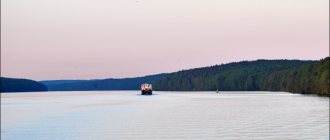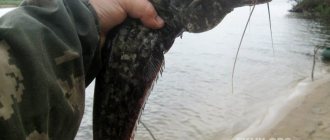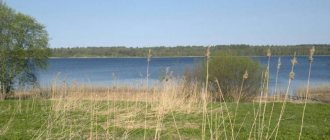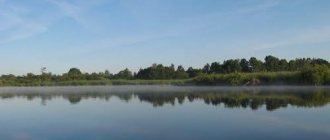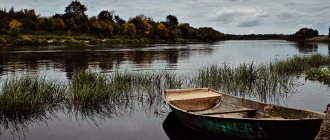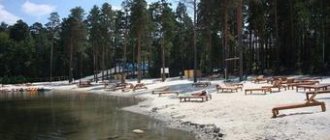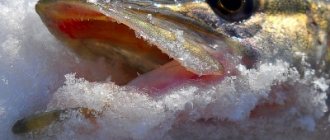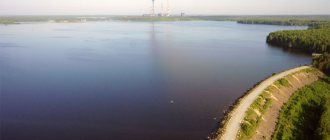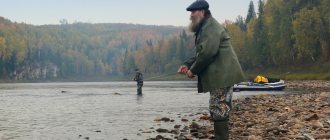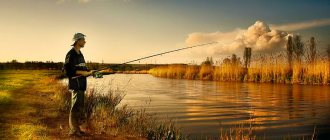Volkhov basin and Lake Ilmen
| Name | Shelon |
| Length | 248 |
| Pool area | 9710 km2 |
| Pool | Ilmen/Volkhov/Lake Ladoga/Neva/Gulf of Finland/Baltic Sea |
| Water consumption | 43.6 m3/s |
| Measurement location | 59 km from the mouth |
| Source | Sudom Hills |
| Source location | Dedovichsky district of Pskov region |
| Source height | 85 |
| Source coordinates | 57°0′0″ S w. 30°0′0″w. d. |
| Estuary | Ilmen |
| Mouth location | Shimsky district of Novgorod region |
| Mouth coordinates | 58°13′39″ S w. 30°53′59″ W d. |
Shelon
(or
Shalon
) is a medium river in the Pskov and Novgorod regions of Russia. The length of the river is 248 km, the area of its drainage basin is 9710 km². The average annual water flow 59 km from the mouth is 43.6 m³/s. Belongs to the Baltic Sea basin.
On the river are the cities of Porkhov, Soltsy, as well as large villages - Dedovichi and Shimsk.
Large tributaries are Mshaga, Sitnya, Udokha, Uza, Sudoma, Ilzna (left), Koloshka, Lemenka, Lyuta, Shilinka, Polonka, Belka, Severa (right).
Mineral springs are often found in the river basin. The river is navigable in the lower reaches, from the city of Soltsy to the mouth.
Description
Shelon begins in large swamps located near the border with the Novgorod region to the southeast of the village of Dedovichi near the village of Novaya Sloboda.
The first meters are a small stream; beyond the mouth of the right tributary of the Severa River, the channel widens due to the support of a dam located just above Dedovichi. Behind the village, near which the large left tributary of the Sudom flows into the Shelon, the width of the river is about 30 meters. Further, the Shelon flows along the plain, sometimes accelerating on small rocky rapids (there are more than 40 rapids on the Shelon), the banks are low, the depth is small - 1.5-2 meters.
Beyond the confluence of the right tributary of the Belka into the Shelon, the Kholomki estate is located - the former estate of the rector of the St. Petersburg Polytechnic Institute A.G. Gagarin.
In front of the city of Porkhov and behind it, the banks of the river rise and are covered with pine forests. The width of the river in the city of Porkhov is about 40 meters, however, actively collecting water from many rivers flowing from the Sudomskaya and Luga uplands to the west of Ilmen, Shelon quickly expands and in the city of Soltsy its width already reaches 70 meters, in Shimsk - about 300 meters , and near the mouth it spreads over several kilometers. Between the border of the Novgorod region and Soltsy there is a series of small rapids on the river. Below Soltsov the river calms down and becomes accessible to ships.
Shelon flows into Lake Ilmen in its western part, forming a delta with an area of 10 km².
On the left bank of the Shelon, not far from the village of Velebitsy, Soletsky district, Novgorod region, on July 14, 1471, a battle took place between Moscow troops and the Novgorod militia, which went down in history as the Battle of Shelon.
Where, when and what kind of fish to catch on Sheloni
The question of where to fish should be based on what kind of predator you are going to hunt. From my point of view, the situation is easiest with pike perch. I came across them on Sheloni throughout the entire season only in the early morning (from 3 to 6 o’clock) and only at the very bottom. Small Shad Rap (5-7 cm) are ideal for pike perch, and the color, in my experience, does not matter. On Sheloni you usually come across fanged ones up to 2 kg, and they do not resist very actively, so a fishing line with a thickness of 0.28-0.3 mm is enough for them.
The fishing itself looks pretty simple. Over and over again I tow wobblers at the very bottom over the edges that have long been known to me and wait for a bite. When the tip of the spinning rod swings down invitingly, you don’t have to hook it with your hands. With monofilament, and even when releasing the wobbler at 70 m, there is not much point in this. I just take a few more strokes with the oars. Accelerating the movement of the boat becomes a hook. If the trophy is solid, then it will detect itself, rushing to the side. After the signal from the clutch that comes into operation, the fisherman will only have to drag the predator into the boat.
The bite when fishing on the track is my favorite moment of fishing. After all, sometimes you plow the river expanses hour after hour and already get tired of watching the tips of the rods, which count down the waterway of my “Kazanka” with nodding metronomes. And when you start to get distracted and more often admire the coastal landscapes rather than spinning rods, then the most important moment of fishing happens. Spinning in an arc, the clutch is cracking, and there is only one thought in your head - hook or fish? But then the line went to the side, and it was immediately clear that a Shelon predator had landed on the tee. Most often, I come across pike, significantly ahead of other fish species in terms of the total number of trophies caught.
Unlike pike perch, which is always caught the same way on the track in Sheloni, you have to adapt to pike depending on the time of year. In the spring, I usually look for “toothy” ones in shallow water. I lead small “Shads” with periodic pauses, giving the wobblers the opportunity to float up and not catch the bottom. In summer and autumn, I hunt pike exclusively at depth, since only at the bottom can I find a really solid “toothy” specimen. I would call the best time to hunt for pike (especially in summer) early morning (from 6 to 9 o'clock) and the second half of the day until night (from 16 to 24 o'clock). In autumn, especially closer to winter, pike are caught the same way almost all daylight hours.
For large pikes, I prepare my most powerful spinning rod from MIKADO with a fishing line ∅0.35 mm. I use the largest wobblers RAPALA Super Shad Rap and Magnum. According to my statistics, reputable predators more often fall for these balsa giants. A good pike will always prefer to rush after a solid prey once than to be scattered over several attacks for a trifle. At the same time, she spends strength on only one throw, and as a reward she receives a significant lunch. I will not argue that the color of the wobbler when fishing near the bottom is of great importance. Even on Sheloni, where the depth is no more than 2.5 m, it is quite gloomy below.
I consider the main thing to be the game and the size of the bait, and not its color. My track statistics confirm this version. The Magnum color GFR is almost as catchable as the silver Super Shad Rap. My other large wobblers are not far behind them - a gray one from DORADO with a length of 11 cm and the same size ORM in a perch coloring.
And yet the largest pike are brought to me by the largest wobbler in my arsenal, Super Shad Rap from RAPALA. This impressively sized artificial fish is the personal champion among my spinning lures. I used it to catch quite a few pike weighing more than 4 kg, including the largest predator I caught on Shelon weighing 5.5 kg.
In addition to excellent catchability, large wobblers have other advantages. So my “Super” almost never catches the grass after hitting the bottom. This is facilitated by impressive tees that cut through underwater thickets like a good razor. Good buoyancy also helps. Having poked into the bottom, the wobbler loses speed and immediately floats up without having time to catch anything. The large size and weight of such baits causes the tip of the spinning rod to vibrate with a clearly visible and sweeping amplitude. Even in the strongest wind it is very easy to control the behavior of the wobbler underwater. This is an important plus, since in windy weather the slight shaking of the spinning rod from small “Shads” is almost unnoticeable.
Large predators are actively caught not only with their corresponding monster baits, but also with small “Shads” and similar floating wobblers 5-8 cm long. “Kids” are very convenient, first of all, for their versatility - you can catch any river predator with them, regardless from size, from small “sailor fish” to respectable pikes, pike perch and asps.
Perch, like pike perch, prefers modest-sized baits. It pounces on them both at the bottom and at half-water, or even at the very surface. The lips of the “striper” are very weak, and by dragging it from seventy meters, you will definitely develop an impressive hole in them with a tee, and as soon as the fishing line weakens, the fish will immediately come off easily. Therefore, I pull out the perches that have bitten on the path, rotating the reel at a constant speed, without pauses, and immediately lift them into the boat without a landing net.
My lightweight Black Panther spinning rod with a line ∅0.25-0.28 mm is quite suitable for catching perches. I specifically hunt for perch only when fishing with two rods at the same time. At the same time, I point a light spinning rod with a small wobbler intended for “striped fish” towards the shore. And the second rod, set at a maximum angle in the opposite direction, will simultaneously search for reputable predators almost in the middle of the river (the width of Shelon easily allows this). Good “sailors” will be caught on the path almost all daylight hours. Their bite on Sheloni always begins after sunrise and ends with the first twilight.
Hunting for asp involves different tactics. I never accidentally come across this cautious predator on Sheloni, especially on wobblers going near the bottom. But if I notice “explosions” of flying bleaks, then I always try to outwit the author of such “fish pyrotechnics”. In such cases, I always attach a grayish-silver 5-centimeter Shad Rap to the leash. This balsa baby not only copies the color and habits of the bleak, but also dives very shallowly, especially when moving with pauses. This wiring makes the bait always move in the upper layers of the water, which is exactly what the asp likes. And the long release of the fishing line allows you not to scare away the lover of bleak “explosions” from his training ground. After visiting the battle site several times, I sometimes manage to lift the silver handsome man into the boat. There are not many asps in Shelon, so every specimen caught is remembered for a long time. And the largest sheresper weighing 2.5 kg was tempted by “Shad” on a summer afternoon, despite the heat.
Equipment
I always prepare thoroughly for line fishing. I take a whole range of necessary accessories into the boat, since I often fish from dawn to dusk. Naturally, when fishing you can’t do without an extractor, a yawner and a landing net with a hook. True, when fishing with wobblers, I try to use the landing net as rarely as possible. Almost always the fish is caught with only one tee, leaving the second completely free. When placing a trophy in a landing net, there is always a good chance of catching the sharp sting on the outside of the net. Accordingly, you are guaranteed nervous tossing of a predator at the side of the boat. While you are wondering what to grab onto - the fishing line, the fish or the landing net, the predator will not wait and will simply walk away, forcing you to remember all the famous curse words.
No less “good” words can go to a fish caught in a landing net, especially a large one, when, spinning around with a wobbler in its mouth, it will thoroughly tangle the net and shorten your fishing trip by almost half an hour. This time will be spent on unraveling the wobbler from the spool. Therefore, as a rule, I drag small pikes and pike perch into the boat by hand, but for the most respectable specimens I prepare a hook. I have already mentioned the benefits of an anchor when fishing in strong winds. It is also useful for stopping over holes, when you just want to tap the depths with bottom lures while standing in one place.
I also use another method to rest from rowing. Tired of working with oars, I land on the shore and simply fish with a float rod. Therefore, along with a couple of spinning rods, I always have a 5-meter “telescope” and a jar of worms with me. This change in fishing method helps to restore strength and supplement the fish soup of pike and pike-perch with roach and bream.
On Sheloni I always carry a trailer with me, but I almost never use it; the bottom of the river is flat and without snags. Much more often, my wobblers catch on the move to the nets of local poachers, which are not always visible from above. For such an occasion, I keep on hand a skein of strong halyard with an old spoon tied at the end with an impressive and durable treble. Approaching the spot of the hook, I hook the net with my minitral and pull it out together with the wobbler. Since I fish on the track almost the whole daylight hours, I have to think about the safety of the caught fish. In the hot summer, immediately after catching, I always gut each caught predator, sprinkle it with salt and put it away from the ubiquitous flies in a plastic tray.
Long fishing also requires a serious approach to the choice of clothing. The weather can change several times during the day. Active paddling requires light and windproof clothing. I always have a warm sweater in my backpack as a backup. It will allow me not to get cold on the shore when I take a break from rowing with a fishing rod in my hands. For sunny weather, polarized sunglasses and a baseball cap with a visor are a must. And with constant rowing, light gloves will not hurt and will get rid of excess calluses.
Naturally, a reliable raincoat should be included in the list of must-haves. In addition to it, I also take with me a small polyurethane seat mat, which is attached to the trousers with a strap. With it, even in the heaviest rain, I am not at all afraid of a wet boat bench. In heavy rain, I take care not only of myself, but also of the safety of my gear. In order not to stop fishing in the rain and not to needlessly wet my reels in the rain, I put some kind of umbrella covers on them. I cut them out of a plastic bottle. The design is very simple. The lower bottom part, 20 centimeters high, is cut off from a 2-liter plastic bottle. On the cut side, two shallow slits are made in it opposite each other for mounting on a spinning rod, and on the side for the reel handle. Installed on a spinning rod with the reel upside down, such a visor is very easily removed when biting.
When catching pikes, it is not always possible to protect yourself from cuts, so you should at least have an adhesive bandage with you. And to recuperate from active rowing during the day, you need to have a supply of food and a thermos of tea (or water in hot summer weather). All this simple but necessary equipment will greatly help you spend the whole day fishing in comfort and without feeling hungry or tired. This means that your already excellent mood will be even better.
In my discussions about fishing on the track, I do not pretend to discover any new truths. I understand perfectly well that experienced fishermen have long known all my tricks. And yet, let me hope that for beginning fishing enthusiasts my advice will be useful. Perhaps for some, this article will be the first acquaintance with “the most fun way of fishing.” After all, this is exactly what the classic of Russian fishing literature L.P. Sabaneev called the path. One cannot but agree with him.
The path will give you countless fun and unforgettable fishing moments and hours spent on the water doing your favorite pastime. You will learn to understand the habits of fish, master your gear perfectly and become friends with the wonderful nature of rivers and lakes. Regular rowing will strengthen your muscles, and the positive emotions of catching weighty track trophies will relieve stress and nervous disorders. In a word, try fishing on the track, and you will become just a happy person. Honestly, I’m not exaggerating, because fishermen don’t deceive each other. Is not it?
Story
Hanseatic documents of the 15th century repeatedly report on the so-called Luga Route, which connected Novgorod with the Gulf of Finland. One of its sections passed along Shelon: Volkhov—Ilmen—Shelon—Mshaga—Kiba—drag to the river. Luga and further along Luga to the Gulf of Finland. The Luga route was the most important transport artery and was actively used when the traditional Volkhov-Ladoga-Neva route was blocked for some reason.
In 1471, on the banks of the Sheloni River, in the area of the current villages of Skirino and Velebitsy (Vybitskoye rural settlement), the Battle of Shelon took place, which determined the end of the Novgorod Republic.
Shelonskaya Pyatina was also named after the river.
How to use the fishing card?
We tried to simplify the use of the depth map and reduce all the complexities to simple controls. So, let's begin:
- When you first visit the page, enter the name of the desired location in the search field.
- Button Pits, a very complex system for automatically identifying holes with a depth of 3 meters from a particular reservoir, in some cases the depth of the holes will be from 2.5 meters, this is due to the surrounding bottom topography, for example, if there is a bottom topography with a depth of up to 1 meter around, then the system will define a depth of 2.5 meters as a hole, which is natural for fishing. When you press the button, areas with the depths of all holes known to the system will be displayed. It is very important to know that the holes are displayed outside the fairway area, that is, the depths will be natural.
- The Coordinates button displays the latitude and longitude of the selected point, press, then click on the desired location, information with data will open. This is necessary for several purposes, for example, you are going fishing with a boat, enter the data of the selected hole into your GPS receiver, echo sounder, chart plotter and follow to the required point. Or you have chosen a point with the depth of the river you like in a place without an address, enter the received coordinates into the navigator and follow the route.
- The Where Am I button was primarily created to determine your geolocation; it may not work on some devices, in which case use the search.
- The Distance button allows you to find out any distance between two or more points. After clicking, click on the map to the desired location, by moving the line, click again to determine the final result. It was specially developed to determine the distance of the fisherman to a specific hole, for example, you are sitting fishing, the depth is visible on the map, by simple manipulations, you can find out the distance from you to the desired place.
- The Whole World button allows you to see the depths of seas, oceans and rivers around the globe. By default it opens in the Primorsko-Akhtarsk area.
- The Places button allows you to see all the fishing spots that our bloggers have added; when clicked, it shows markers with fishing coordinates and a link to the description of this fishing spot.
Water register data
Tributaries (km from mouth)
- 9 km: Veksha River (pr)
- 14 km: Uglyanka River (pr)
- 18 km: Strupenka river (lv)
- 19 km: Mshaga River (lv)
- 21 km: Sosenka River (pr)
- 32 km: Turyevsky stream (pr)
- 35 km: Koloshka River (pr)
- 42 km: Krutets River (lv)
- 48 km: Milits River (lv)
- 51 km: Borovenka River (pr)
- 57 km: Patcherka (Koleshovka) river (pr)
- 64 km: Sitnya river (lv)
- 71 km: Lemenka River (pr)
- 82 km: Lyuta River (pr)
- 93 km: Udokha River (lv)
- 103 km: Dryazhzhinka river (lv)
- 106 km: river Shchilinka (Krasukha) (pr)
- 112 km: Demyanka river (Tenyukha, Demyanka) (lv)
- 120 km: Uza River (lv)
- 125 km: Polonka River (pr)
- 145 km: Bakharevka stream (lv)
- 148 km: Belka River (pr)
- 151 km: Lyubava stream (lv)
- 153 km: Tishinka River (lv)
- 165 km: Dubechenok stream (pr)
- 178 km: Sudoma River (lv)
- 185 km: Ilzna River (lv)
- 200 km: Gorodyanka river (lv)
- 210 km: Severka River (Severa) (pr)
- 215 km: Gribkovsky stream (pr)
- 221 km: Bolotinka River (pr)
Add a comment
Comment
Send
